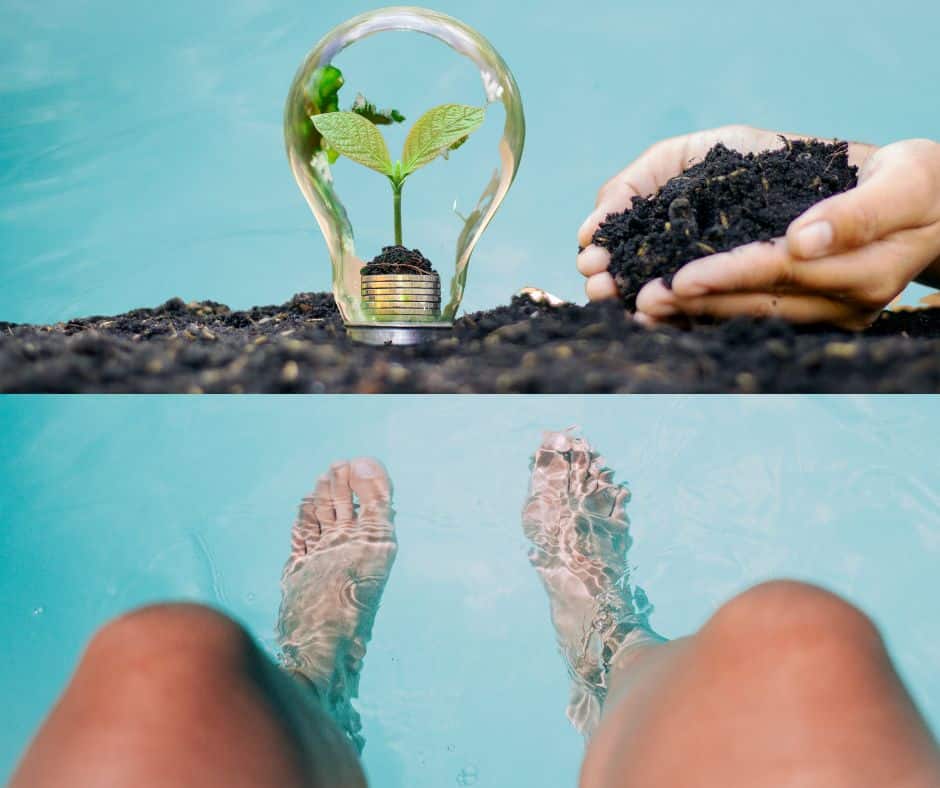
How to reduce the power consumption of your spa? When winter sets in and temperatures drop, there's no better way to relax than to immerse yourself in a spa and enjoy its jets! But be careful, because the electricity bill can quickly rise. According to the FFP ( French Federation for Pool and Spa professionals) the average cost of a spa is €200 per year for an indoor spa and €400 for an outdoor spa. However, with a few simple tips, you can reduce the final cost of your electricity bill. These are significant savings given the rising cost of energy.
The energy consumption of your spa depends on several parameters: adjusting the settings, the choice of equipment and its use can significantly reduce the bill.
The water filtration system, while essential to maintain its balance, is also particularly energy consuming. Here is a reminder of the filtration time: you need to take the temperature of the water in °C and divide it by 2 to find the number of hours of filtration per day necessary for good water quality.
Keeping the water temperature constant at 39°c is certainly very pleasant, but it also increases your electricity bill. Do not hesitate to change the settings slightly, by adjusting the temperature to 37 or 38°c. Do not hesitate to consult your manufacturer's recommendations for use. Finally, some newer spas have an "energy saving" mode that can also make a difference.
The massaging jets propel air to massage the body, but also contribute to lowering the water temperature. The heat pump is therefore used more to keep the water temperature constant. Use only the jets you need for your massage session and turn them off as soon as possible to save electricity.
In addition to causing a chemical imbalance in the water, a filter that is not regularly maintained also contributes to poor circulation. This can lead to overuse of the heat pump heater to achieve the correct temperature. Find our tips to clean your spa properly.
Newer models of hot tubs have well insulated shells that prevent heat loss. However, without a protective cover most of the heat escapes and the water evaporates. Investing in a good quality cover (e.g. thermal or bubble cover) will allow you to save between 2 and 5°C. You should choose the cover according to the size of your spa of course, but also according to your region: the colder the region in winter or the windier it is, the greater the isothermal capacity of the cover should be. In short, you save energy, water consumption and money!
Your spa tank insulation and even more so the enclosure is very important to maintain a constant water temperature. The better the insulation, the better the temperature will be maintained and the better you can avoid a thermal bridge. These are the places where you will have a heat transfer that results in the loss of a few degrees. Some manufacturers offer high performance insulation systems for the tank, but you can also improve your installation with insulating foam that should be placed between the liner and the tank.
Follow these energy saving tips when using your spa and remember that it also helps to reduce your impact on the planet.
| Cookie | Duration | Description |
|---|---|---|
| cookielawinfo-checkbox-analytics | 11 months | This cookie is set by GDPR Cookie Consent plugin. The cookie is used to store the user consent for the cookies in the category "Analytics". |
| cookielawinfo-checkbox-functional | 11 months | The cookie is set by GDPR cookie consent to record the user consent for the cookies in the category "Functional". |
| cookielawinfo-checkbox-necessary | 11 months | This cookie is set by GDPR Cookie Consent plugin. The cookies is used to store the user consent for the cookies in the category "Necessary". |
| cookielawinfo-checkbox-others | 11 months | This cookie is set by GDPR Cookie Consent plugin. The cookie is used to store the user consent for the cookies in the category "Other. |
| cookielawinfo-checkbox-performance | 11 months | This cookie is set by GDPR Cookie Consent plugin. The cookie is used to store the user consent for the cookies in the category "Performance". |
| viewed_cookie_policy | 11 months | The cookie is set by the GDPR Cookie Consent plugin and is used to store whether or not user has consented to the use of cookies. It does not store any personal data. |